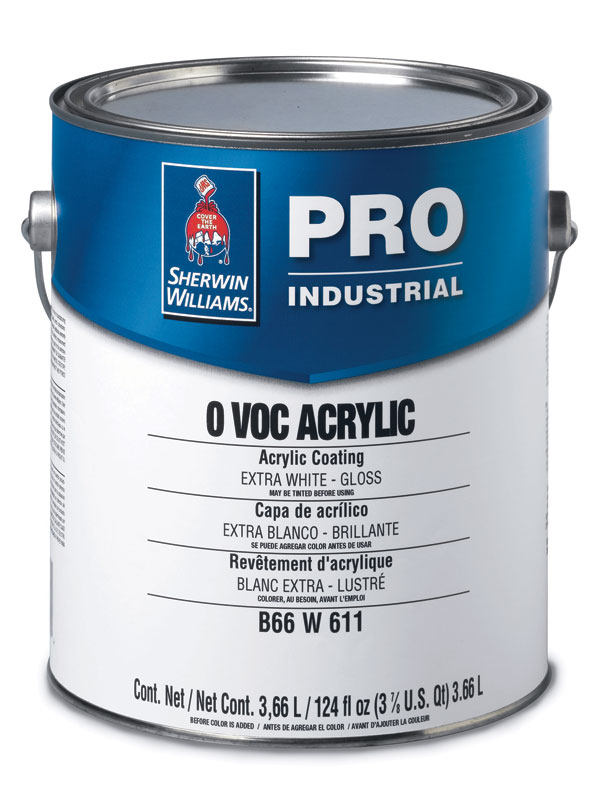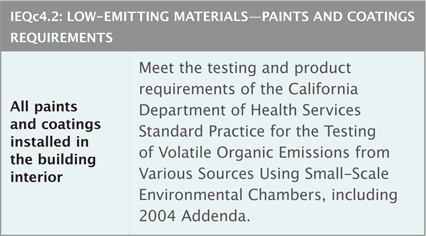
Performance should not be an issue
Major manufacturers offer paints and coatings that are just as durable and perform just as well as their higher-VOC counterparts. Performance of low-VOC products has sometimes been an issue in the past, but the market has largely moved beyond this point.
Low-VOC acrylic paint is readily available. While It may be more difficult, it is not impossible to find low-VOC oil-based and high-gloss paints. Darker shades of paints also tend to have higher VOC levels Rust proofing coatings also tend to have higher VOC content, but several name brand providers have low-VOC alternatives.
Proactive communication on the jobsite
Low-VOC paint like this 0-VOC Acrylic from Sherwin-Williams does not have to sacrifice performance or cost.
Making sure that VOC limits are observed demands proactive communication between the designer, contractor, and all subcontractors who do work inside the building. Subcontractors have to be educated about the requirements, and their contracts should require that they document their compliance.
If you make a mistake, you can still earn the credit
Unlike some LEED credits where only a certain percentage of the materials have to comply, this credit is all-or-nothing—all paints and coatings must comply. If a non-compliant paint or coating gets used by mistake, or if you need to bend the VOC limits to meet the requirements of a warranty or fire code, you can still earn the credit following the “VOC budget process.” You’ll simply have to do some calculations to show that your extra use of VOCs was offset by very low use of VOCs elsewhere. You have to meet the budget for paints and coatings separately from adhesives and sealants (for IEQc4.1), though—you’re not allowed to create a combined VOC budget covering multiple IEQc4 credits.
Multiple benefits
Earning this credit is a key part of a construction indoor-air-quality management plan, and will help you earn another LEED point via IEQc3.1: Construction Indoor Air Quality Management Plan—During Construction.
Earning this credit can also help teams pass air quality tests needed to earn IEQc3.2: Construction Indoor Air Quality Management Plan—Before Occupancy.
Using low-VOC paints and coatings is not only beneficial to occupants, but can improve air quality and the health of construction workers who are constantly exposed to construction pollution.

